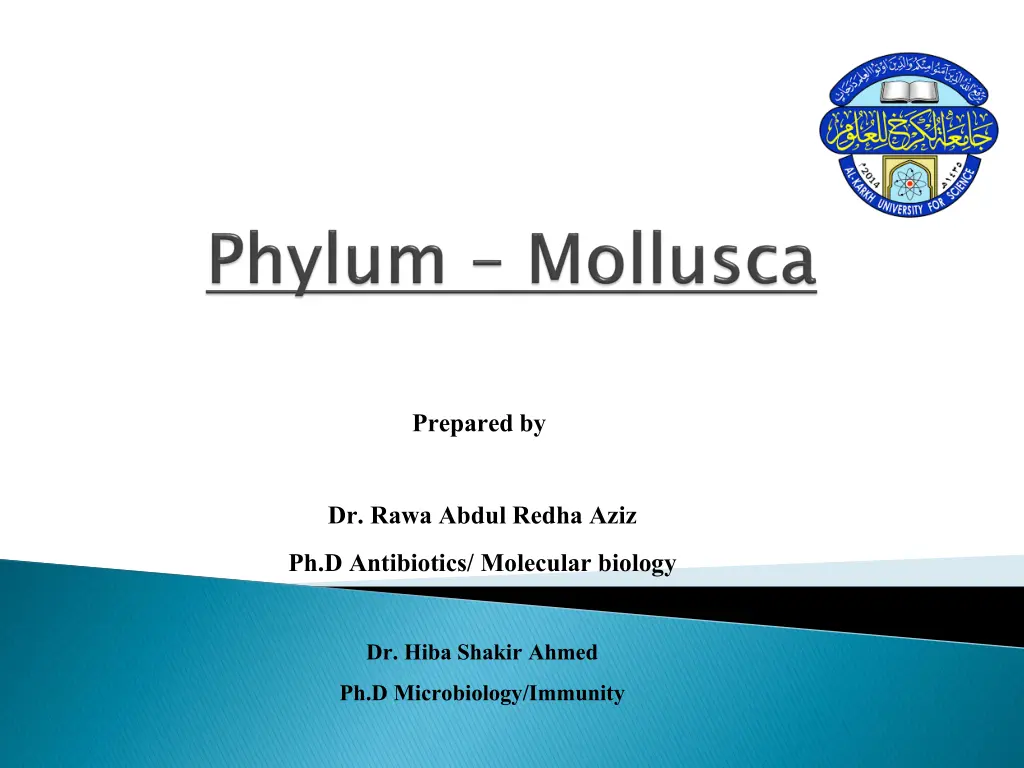
Fascinating Facts About Mollusca and Echinodermata
Discover the unique characteristics of Mollusca and Echinodermata, including their symmetrical body structures, diverse organs, and specialized systems for locomotion. Explore the fascinating world of these aquatic and terrestrial animals with distinct features such as sensory tentacles, calcareous shells, and water vascular systems. Dive into the wonders of nature with this informative overview of two intriguing animal phyla.
Uploaded on | 0 Views
Download Presentation

Please find below an Image/Link to download the presentation.
The content on the website is provided AS IS for your information and personal use only. It may not be sold, licensed, or shared on other websites without obtaining consent from the author. If you encounter any issues during the download, it is possible that the publisher has removed the file from their server.
You are allowed to download the files provided on this website for personal or commercial use, subject to the condition that they are used lawfully. All files are the property of their respective owners.
The content on the website is provided AS IS for your information and personal use only. It may not be sold, licensed, or shared on other websites without obtaining consent from the author.
E N D
Presentation Transcript
Prepared by Dr. Rawa Abdul Redha Aziz Ph.D Antibiotics/ Molecular biology Dr. Hiba Shakir Ahmed Ph.D Microbiology/Immunity
Mollusca are the second largest animal phylum. They are terrestrial or aquatic. They exhibit organ They are bilaterally symmetrical, animals They have an open circulatory system and kidney excretion. The anterior head region has sensory tentacles. The mouth contains a file-like rasping organ for feeding, called radula They are usually dioecious and oviparous with indirect development. Body is covered by a calcareous shell and is unsegmented with a distinct head, muscular foot and visceral hump. A soft and spongy layer of skin forms a mantle over the visceral hump. Examples are octopus organ- -system level of organization bilaterally symmetrical, triploblastic animals. There is little segmentation. system level of organization. triploblastic, , coelomate coelomate kidney- -like like organs for radula. octopus, snails snails and mussels mussels.
These animals have an endoskeleton of calcareous ossicles [calcium carbonate structures] and, hence, the name Echinodermata (spiny skinned organisms They are exclusively free-living marine animals organisation. They are triploblastic [coelomate animals]. The adult echinoderms are radially bilaterally symmetrical spiny skinned organisms). marine animals with organ organ- -system level system level of triploblastic with a coelomic coelomic cavity radially symmetrical bilaterally symmetrical. symmetrical but larvae are
Water-driven tube system [water vascular system] are used for locomotion, capture and transport of food and respiration. They are triploblastic and coelomate animals. Digestive system is complete. An excretory system is absent. Sexes are separate. Reproduction is sexual. Fertilisation is usually external. Development is indirect with free-swimming larva. Examples: Star fish, Sea urchin, Sea lily, Sea cucumber, Brittle star






















